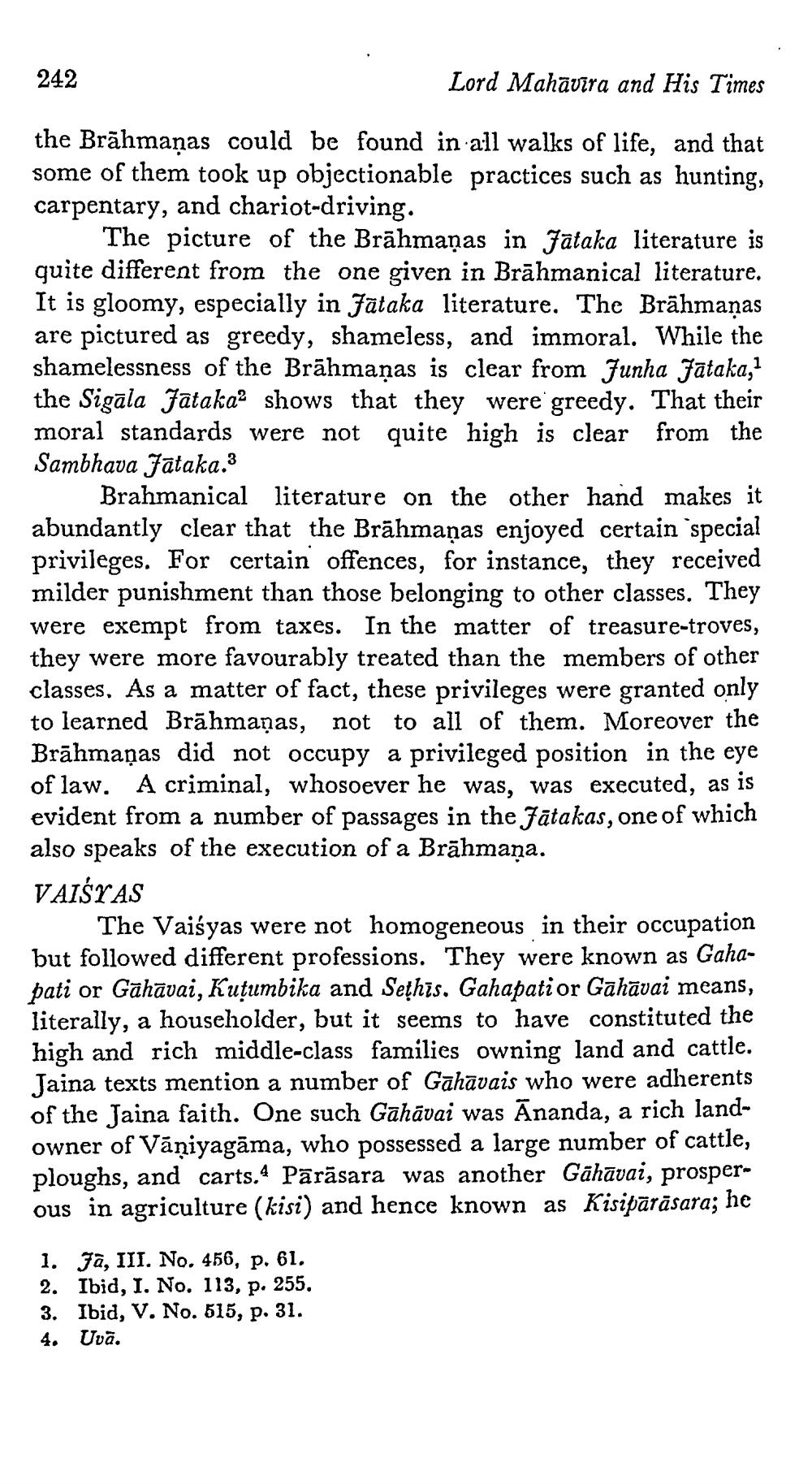________________
242
Lord Mahāvīra and His Times
the Brāhmaṇas could be found in all walks of life, and that some of them took up objectionable practices such as hunting, carpentary, and chariot-driving.
The picture of the Brāhmaṇas in Jataka literature is quite different from the one given in Brāhmanical literature. It is gloomy, especially in Jātaka literature. The Brāhmaṇas are pictured as greedy, shameless, and immoral. While the shamelessness of the Brāhmaṇas is clear from Junha Jataka, the Sigāla Jataka” shows that they were greedy. That their moral standards were not quite high is clear from the Sambhava Jataka.3
Brahmanical literature on the other hand makes it abundantly clear that the Brāhmaṇas enjoyed certain special privileges. For certain offences, for instance, they received milder punishment than those belonging to other classes. They were exempt from taxes. In the matter of treasure-troves, they were more favourably treated than the members of other classes, As a matter of fact, these privileges were granted only to learned Brāhmaṇas, not to all of them. Moreover the Brāhmaṇas did not occupy a privileged position in the eye of law. A criminal, whosoever he was, was executed, as is evident from a number of passages in the Jātakas, one of which also speaks of the execution of a Brāhmana. VAISTAS
The Vaiśyas were not homogeneous in their occupation but followed different professions. They were known as Gahapati or Gahāvai, Kutumbika and Sethīs. Gahapati or Gahāvai means, literally, a householder, but it seems to have constituted the high and rich middle-class families owning land and cattle. Jaina texts mention a number of Gahāvais who were adherents of the Jaina faith. One such Gahāvai was Ānanda, a rich landowner of Vāniyagāma, who possessed a large number of cattle, ploughs, and carts. Pārāsara was another Gāhāvai, prosperous in agriculture (kisi) and hence known as Kisipārāsara; he
1. Ja, III. No. 456, p. 61. 2. Ibid, I. No. 113, p. 255. 3. Ibid, V. No. 515, p. 31. 4. Uvā.




